Wessex
Videos
Page
The Kingdom of the West Saxons, also known as the Kingdom of Wessex, was an Anglo-Saxon kingdom in the south of Great Britain, from around 519 until England was unified in 927.

Imaginary depiction of Cerdic from John Speed's 1611 "Saxon Heptarchy"
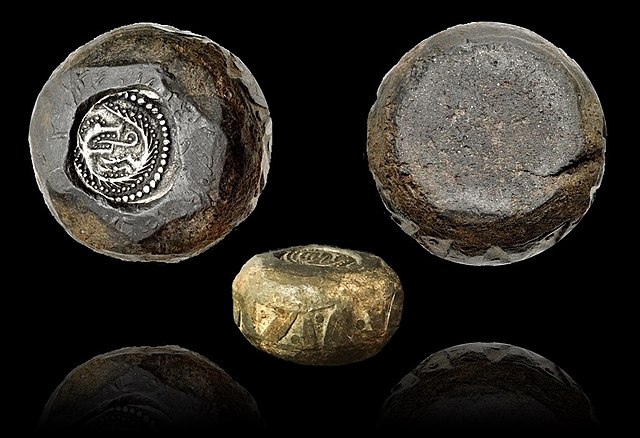
Anglo-Saxon–Viking coin weight, used for trading bullion and hacksilver. The material is lead and it weighs 36 g (1.3 oz). Embedded with an Anglo-Saxon sceat (Series K type 32a) dating to 720–750 and minted in Kent. It is edged in a dotted triangle pattern. Its origin is the Danelaw region and dates to 870–930
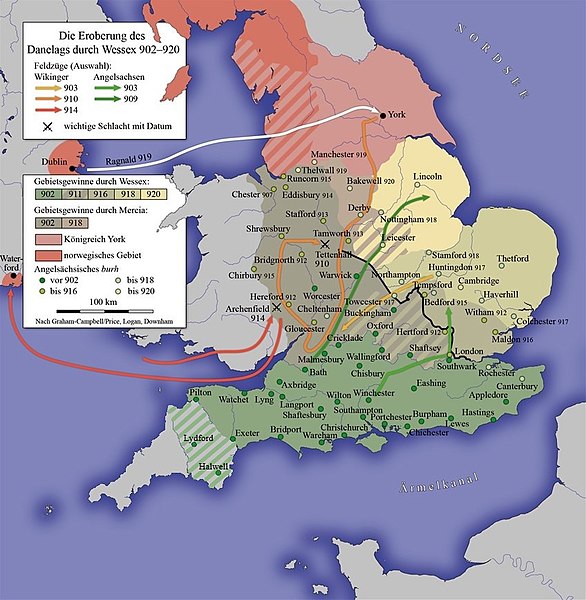
Unification of England and Defeat of the Danelaw in the 10th century under Wessex.
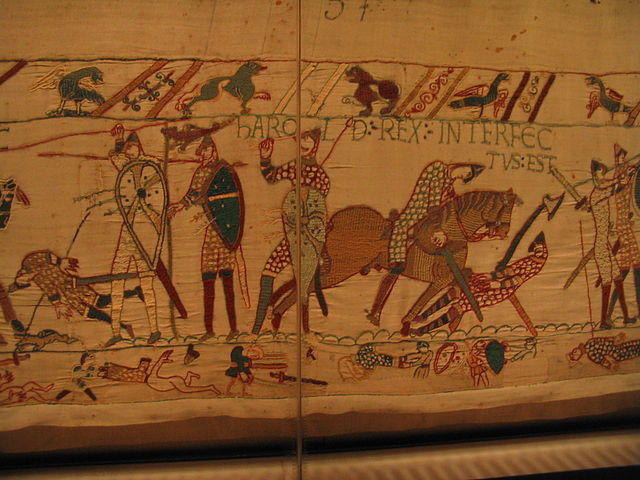
The Bayeux Tapestry, depicting the death of Harold II, 14 October 1066. His "Wyvern Standard" can be clearly seen at the left side.
Anglo-Saxons
Videos
Page
The Anglo-Saxons were a cultural group that inhabited much of what is now England in the Early Middle Ages, and spoke Old English. They traced their origins to Germanic settlers who came to Britain from mainland Europe in the 5th century. Although the details are not clear, their cultural identity developed out of the interaction of these settlers with the pre-existing Romano-British culture. Over time, most of the people of what is now southern, central, northern and eastern England came to identify as Anglo-Saxon and speak Old English. Danish and Norman invasions later changed the situation significantly, but their language and political structures are the direct predecessors of the medieval Kingdom of England, and the Middle English language. Although the modern English language owes somewhat less than 26% of its words to Old English, this includes the vast majority of words used in everyday speech.
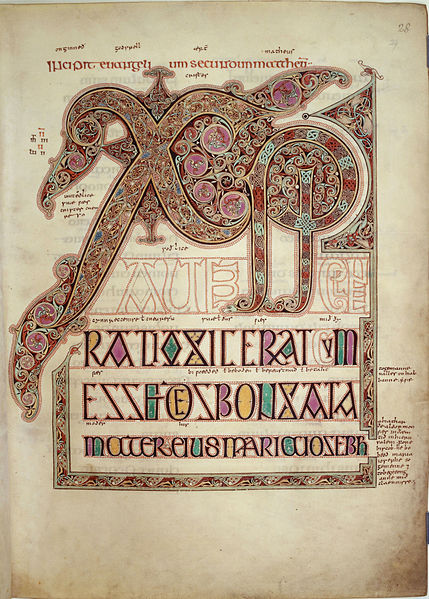
Page with Chi Rho monogram from the Gospel of Matthew in the Lindisfarne Gospels c. 700, possibly created by Eadfrith of Lindisfarne in memory of Cuthbert
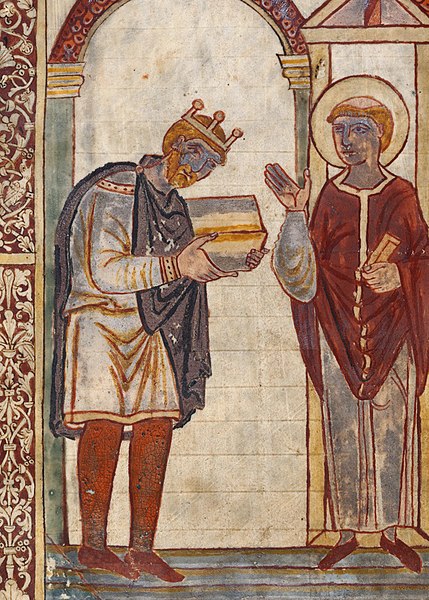
King Æthelstan presenting a gospel book to (the long-dead) St Cuthbert (934); Corpus Christi College, Cambridge MS 183, fol. 1v
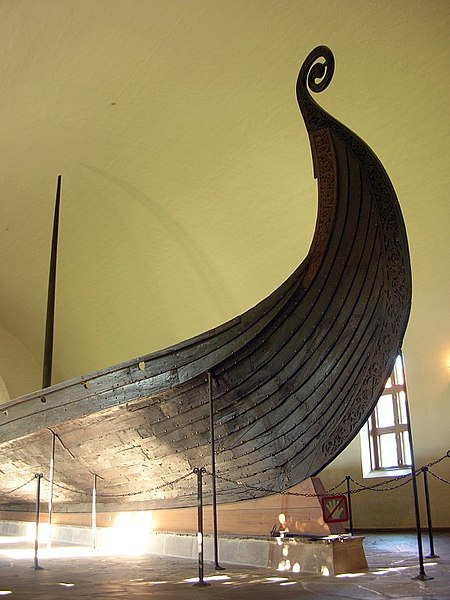
The Oseberg ship prow, Viking Ship Museum, Oslo, Norway.

Anglo-Saxon-Viking coin weight. Material is lead and weighs approx 36 g. Embedded with a sceat dating to 720–750 AD and minted in Kent. It is edged with a dotted triangle pattern. Origin is the northern Danelaw region, and it dates from the late 8th to 9th century.